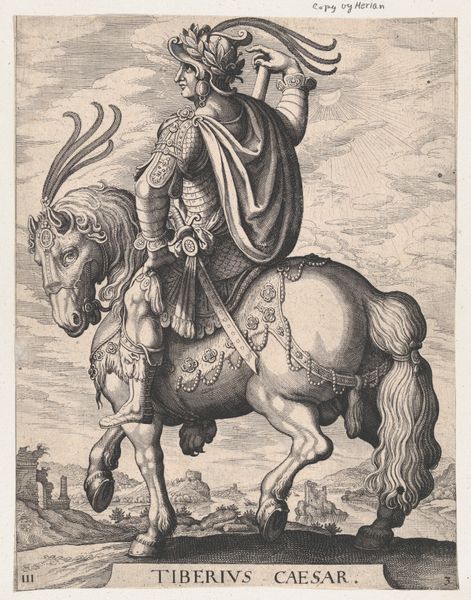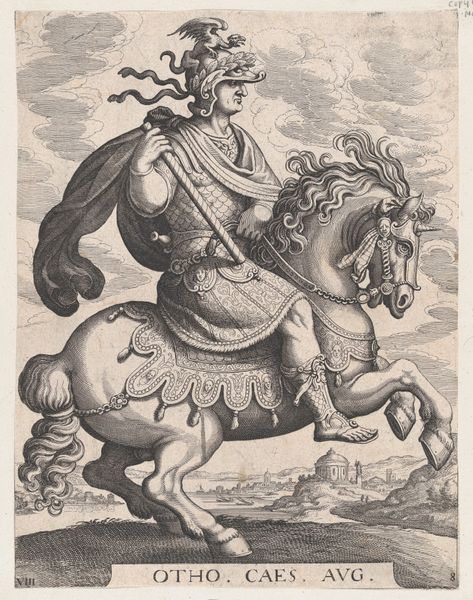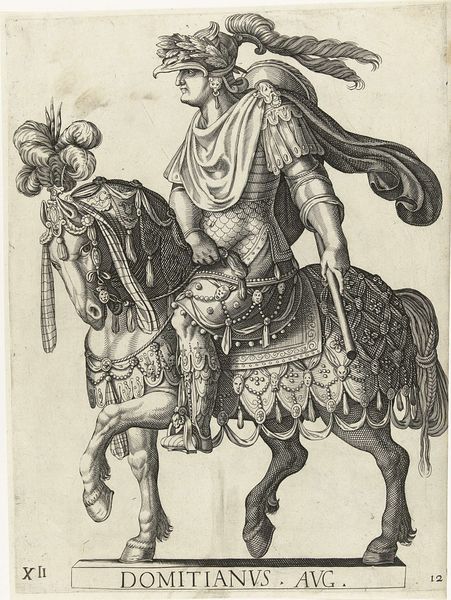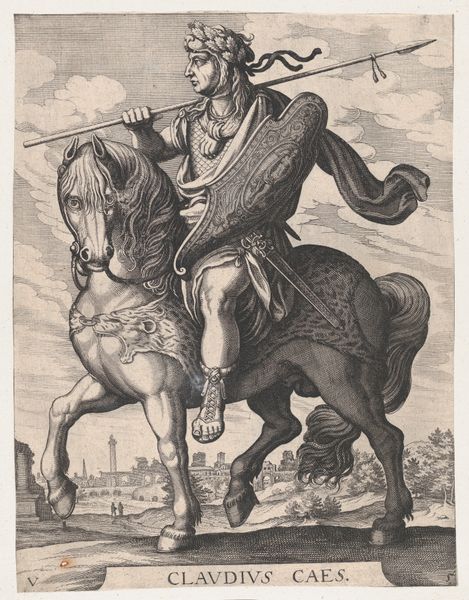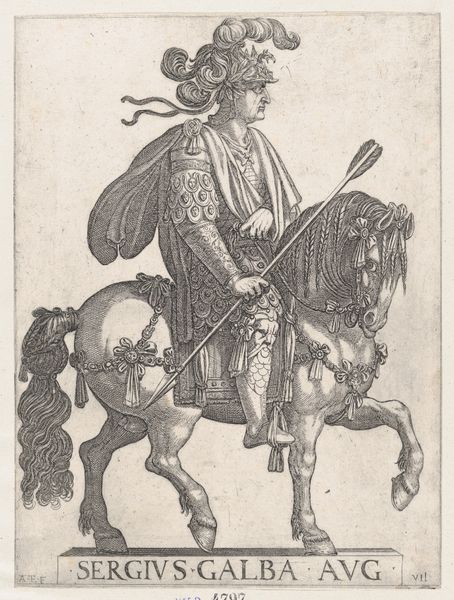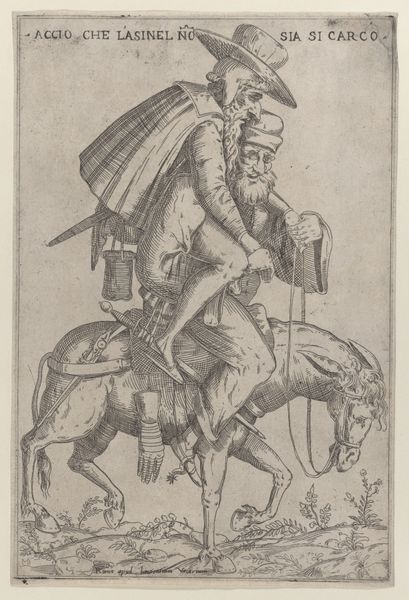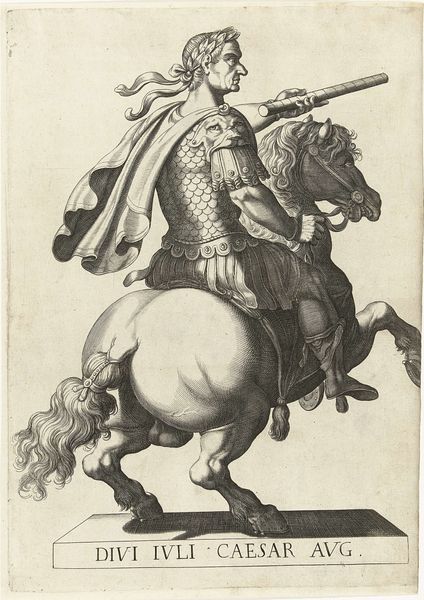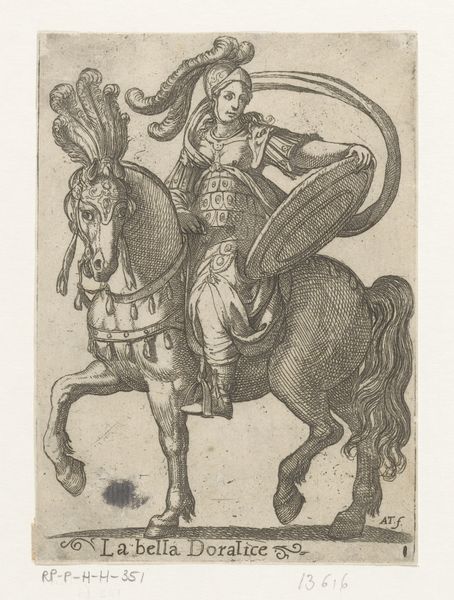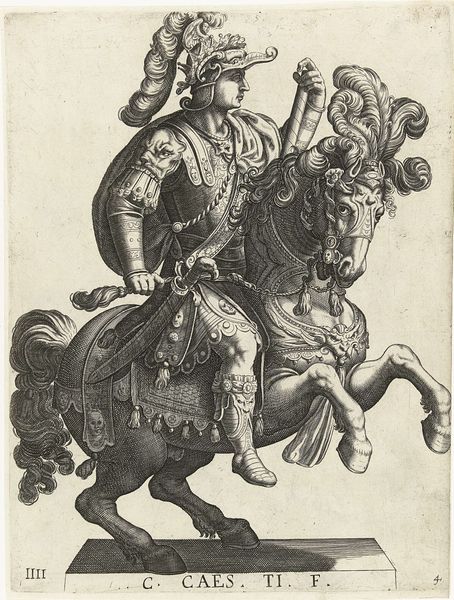
Plate 7: Emperor Galba on Horseback, from 'The First Twelve Roman Caesars' after Tempesta 1610 - 1650
0:00
0:00
drawing, print, engraving
#
portrait
#
drawing
# print
#
figuration
#
roman-art
#
horse
#
line
#
history-painting
#
engraving
Dimensions: Sheet: 11 5/8 × 9 1/16 in. (29.5 × 23 cm)
Copyright: Public Domain
Curator: This engraving presents Galba, one of the twelve Roman Caesars. Matthäus Merian the Elder created it sometime between 1610 and 1650, borrowing from designs by Antonio Tempesta. What strikes you first? Editor: The horse. It's got such a strange, almost comical grandeur. All those tassels and that improbably huge tail—it's overloaded with symbolic power. Look how it emphasizes a distance between the man and his public, too. Curator: There is so much ornamentation; the engraving almost reads like a ledger of craft. The etching celebrates metalworking, textile production, and even the elaborate grooming required to achieve the perfect equestrian portrait. Imagine the workshops... Editor: But does this fetishization with labor truly elevate these artisans, or simply instrumentalize them for Galba's glorification? There’s also that very interesting feather in his helmet, but Galba, well he doesn't strike me as a Caesar known for lightheartedness or frivolity! Curator: It’s a complex dance of symbolism. Galba, who reigned for only seven months, sought to legitimize his rule through these elaborate displays of power. Yet, doesn't it reek a bit of desperation? All this symbolic expenditure. Editor: I suppose. And that connects to this engraving, of course: as a commodity in its own right, this work can be bought, collected, traded, and displayed. Its power extends beyond merely preserving an image of power—it manifests that power materially. Curator: Interesting point. So, this "historical" portrait lives on now as a manufactured object that is both aesthetic and economical. Is it not ironic to consider the legacy of Roman might reduced to consumerist artifacts? It’s quite a provocative thought! Editor: Definitely. Galba would probably hate this. A distributed image, lacking control over his narrative? Perhaps an engraver using his image in a commercial transaction, for a few coins? All far removed from the imperial control he likely thought his armor and steed would offer him! Curator: Yes, it seems that time, labor, and commerce can indeed dethrone even emperors! What a clever reversal and thought! Editor: Agreed. Well, shall we go look at something that takes less... work to explain?
Comments
No comments
Be the first to comment and join the conversation on the ultimate creative platform.

